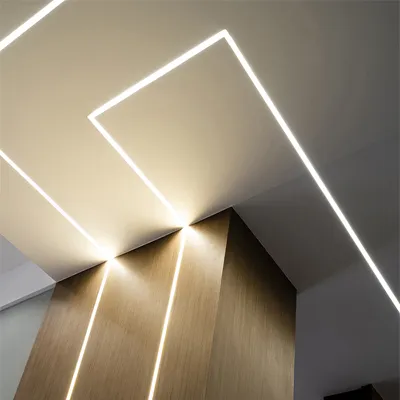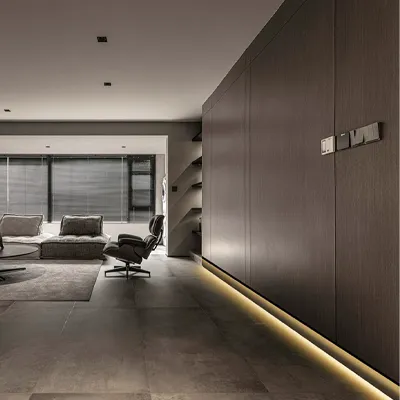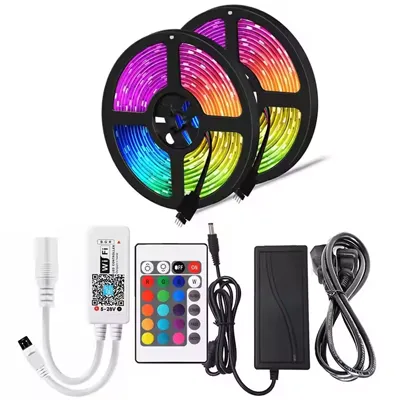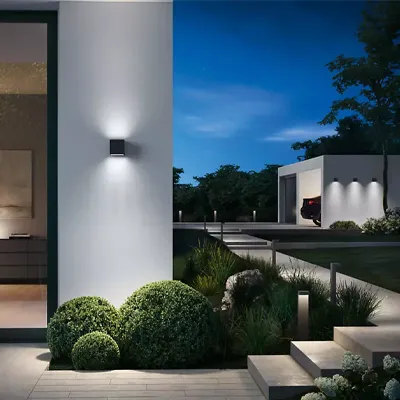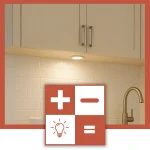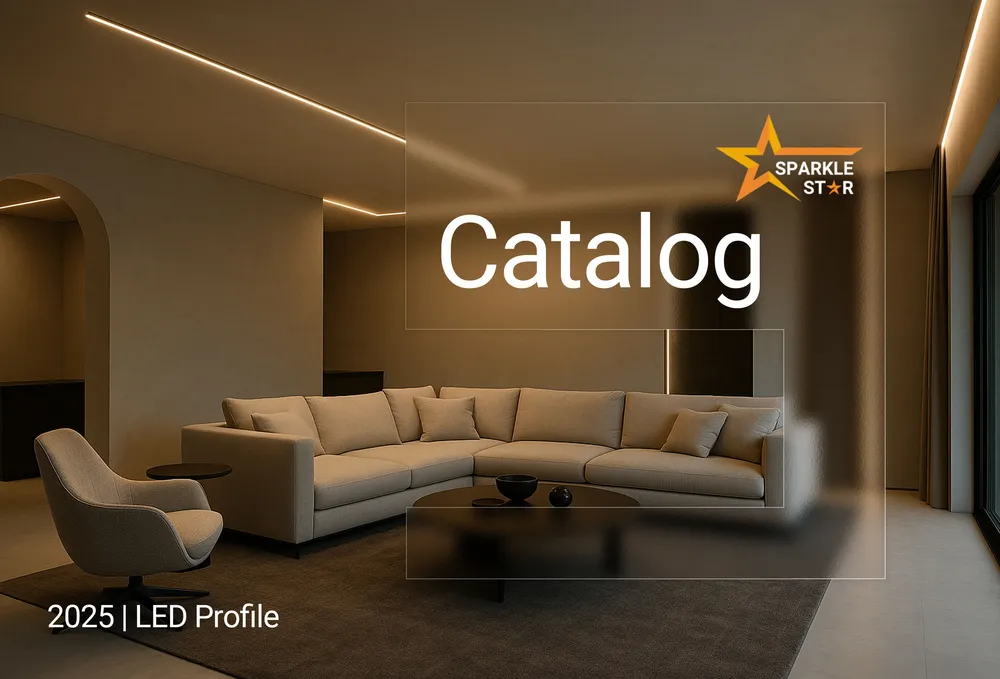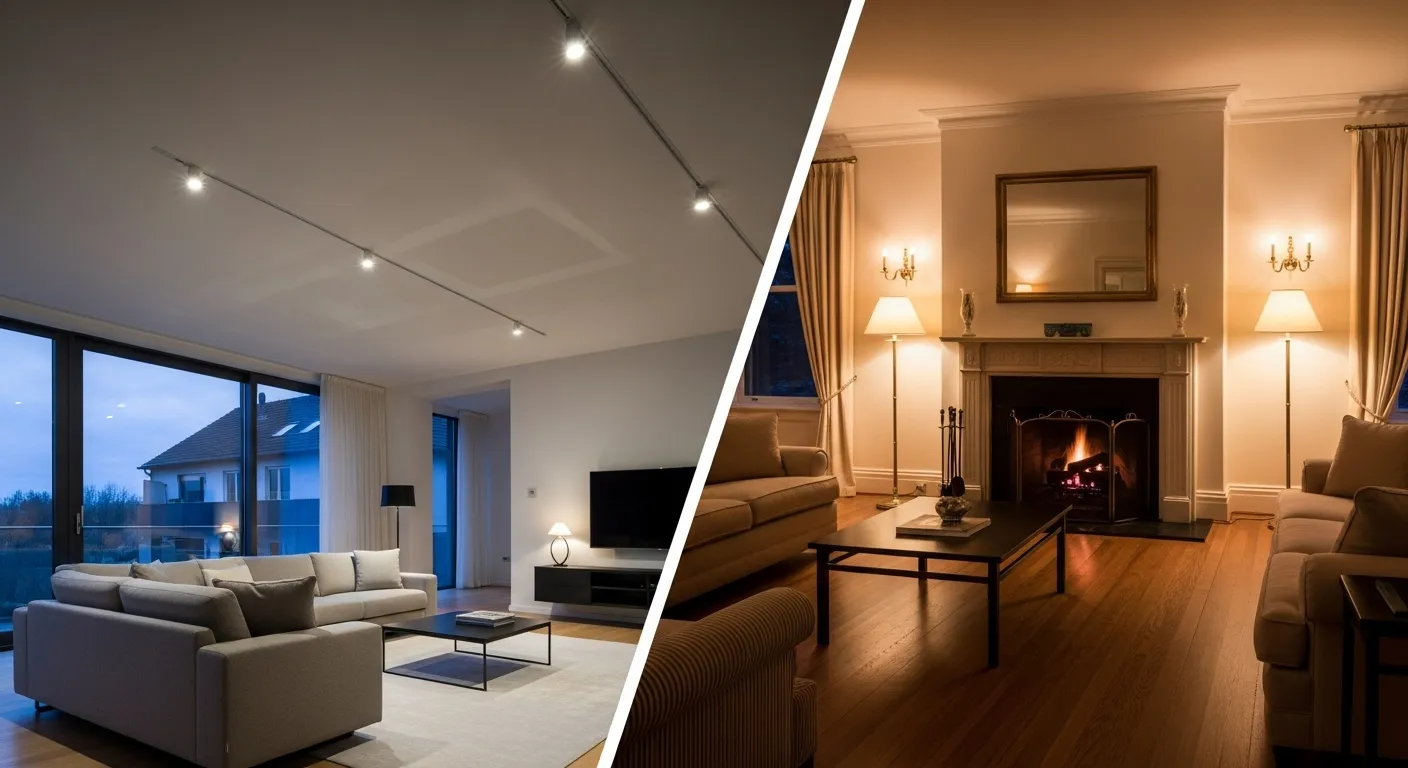
Magnetic track lighting is a staple in modern design globally, yet in the United States, it remains a niche product. This raises the question many designers and homeowners ask: Why are magnetic track lights not popular in the US? The answer is a complex mix of technical, regulatory, and market realities that are often misunderstood. This guide deciphers these barriers, showing you how to identify a professional, reliable system.
How Magnetic Tracks Work Differently
To understand the situation in the US, we first need to look at the core technology. The way magnetic track systems are powered is fundamentally different from the traditional track lighting used in American homes for decades. This single distinction is the source of its greatest advantages and its biggest challenges.
- Traditional Track Lighting: Operates directly on line-voltage, 120-volt alternating current (AC). Each light head typically contains its own small components to power the bulb.
- Magnetic Track Lighting: Operates on low-voltage, typically 24-volt or 48-volt direct current (DC). The entire track is powered by a single, separate component.
This low-voltage design was a deliberate engineering choice made for two primary reasons.
First, safety. A track carrying only 24V or 48V is considered touch-safe, which eliminates the risk of electric shock from touching the internal conductors.
Second, aesthetics. By moving the bulky power conversion electronics out of the individual light fixtures, designers can create the ultra-thin, minimalist profiles that are central to the system's modern appeal.
However, this architecture requires a separate, external power supply (also called a driver or transformer) to convert the home's 120V AC power to low-voltage DC. This component is the system's heart, and its physical presence creates a series of cascading challenges.
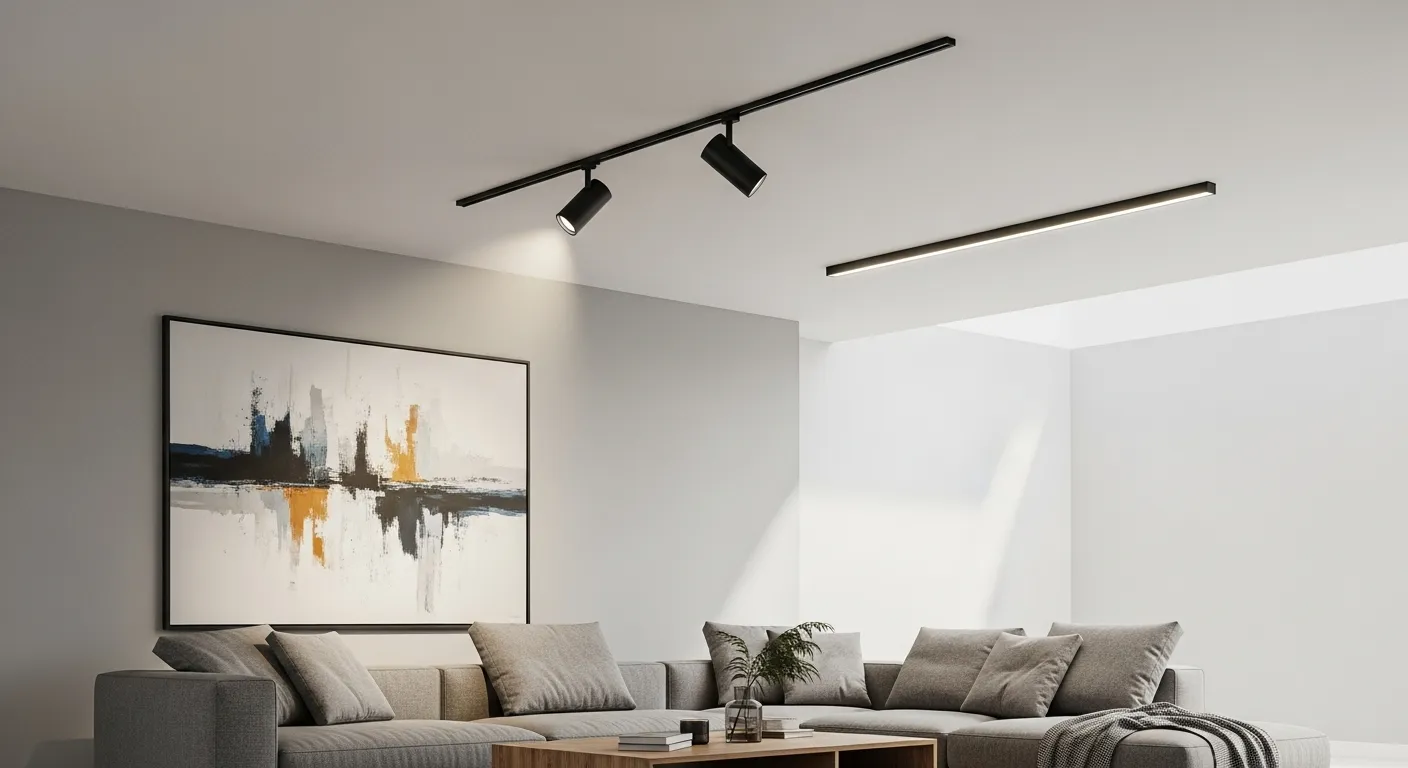
The Hidden Installation Challenges
The need for an external power supply creates what I call in my practice the "driver dilemma." The driver is a sizable component, often the size of a brick, that must be hidden for aesthetic reasons, yet remain accessible for any future maintenance or replacement.
In new construction with suspended ceilings or planned access panels, this is a simple matter of allocation. The real challenge arises in retrofitting existing homes. Consider a common scenario: an apartment with a solid concrete ceiling. The electrician's only viable option might be to cut a channel in the wall, run wiring to a nearby closet, and place the driver on a top shelf. This not only involves significant labor, cost, and finish work, but also requires the homeowner to sacrifice storage space.
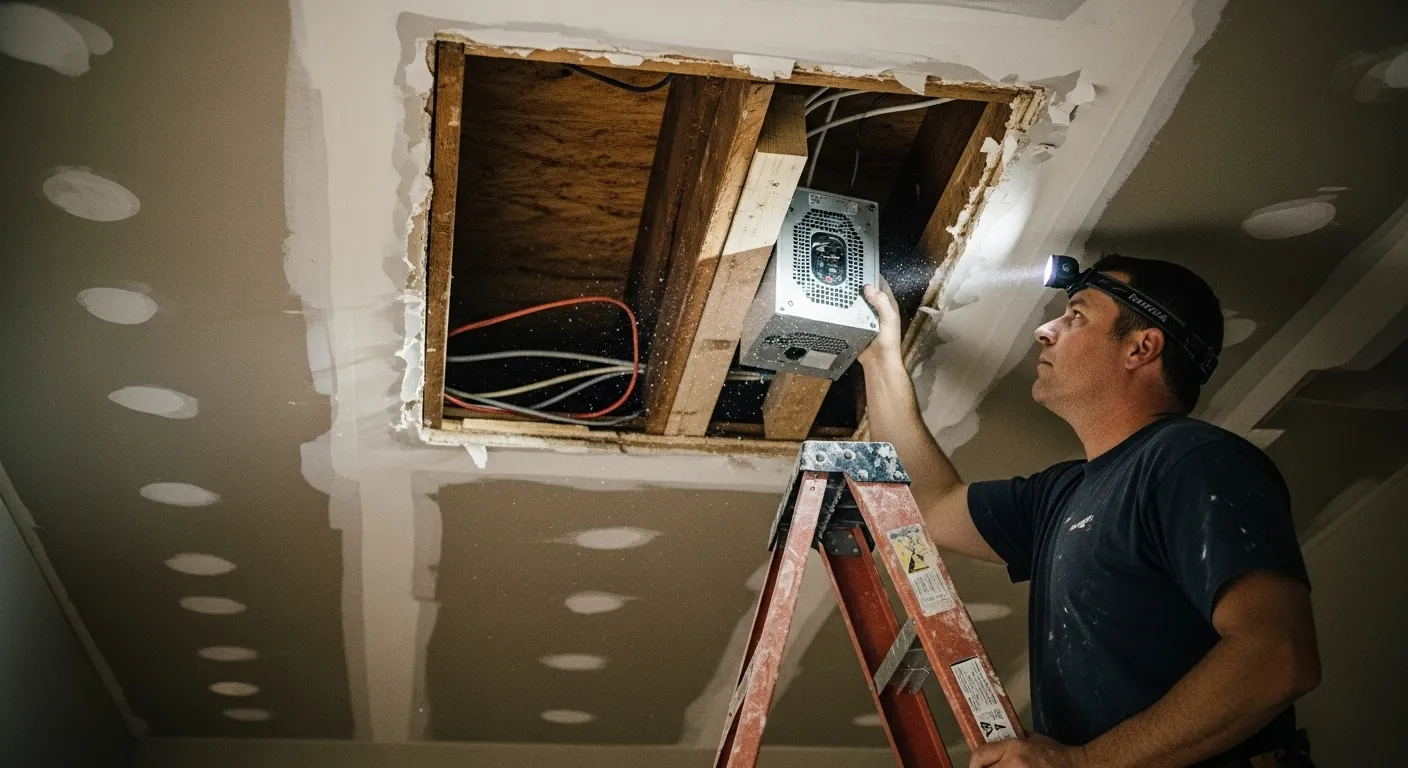
This leads to the "paradox of simplicity." The marketing often showcases the satisfying, tool-free "click" of adjusting lights. This is the simple part. The difficult part is the initial installation. Achieving the sleek, recessed "trimless" look is a multi-trade operation involving:
- A carpenter to build a support structure.
- An electrician to wire the low-voltage system.
- A drywall specialist to meticulously plaster and sand for a seamless finish.
The simplicity is in the daily use, not the setup, and this mismatch in expectations is a major source of friction.
Why the US Market Hesitates
Beyond the technical hurdles, several stark market realities have slowed adoption in the United States.
- The High Upfront Cost: A professional-grade magnetic track system is a significant investment. To put it in perspective with real-world numbers, a single 6-foot section of recessed track from a reputable brand can cost over $250. Individual light modules can range from $70 for a basic spotlight to over $160 for a linear fixture. Outfitting a small room can easily surpass several thousand dollars in materials alone, a cost driven by R&D, superior materials, and brand warranties.
- The "Walled Garden" Risk: These systems are almost entirely proprietary. This is like buying a unique smartphone with a special charger nobody else makes; if the company stops making that charger, your phone becomes useless. For a consumer, this means investing in a system that could become an obsolete fixture embedded in their ceiling if the brand disappears or discontinues the line.
- The Contractor Knowledge Gap: Many skilled US electricians are masters of line-voltage systems, but may hesitate when faced with a low-voltage DC setup. Imagine a homeowner showing pictures of a sleek European installation to their contractor. The contractor, weighing the risks of working with an unfamiliar system and the potential for callbacks, may rationally steer the client toward more predictable recessed can lights. This isn't a lack of skill, but a preference for known quantities.
The Electrical Certification Gatekeeper
Perhaps the single most important structural barrier in the professional US market is electrical safety certification. In the United States, any electrical product permanently installed in a building must be tested by a Nationally Recognized Testing Laboratory (NRTL).
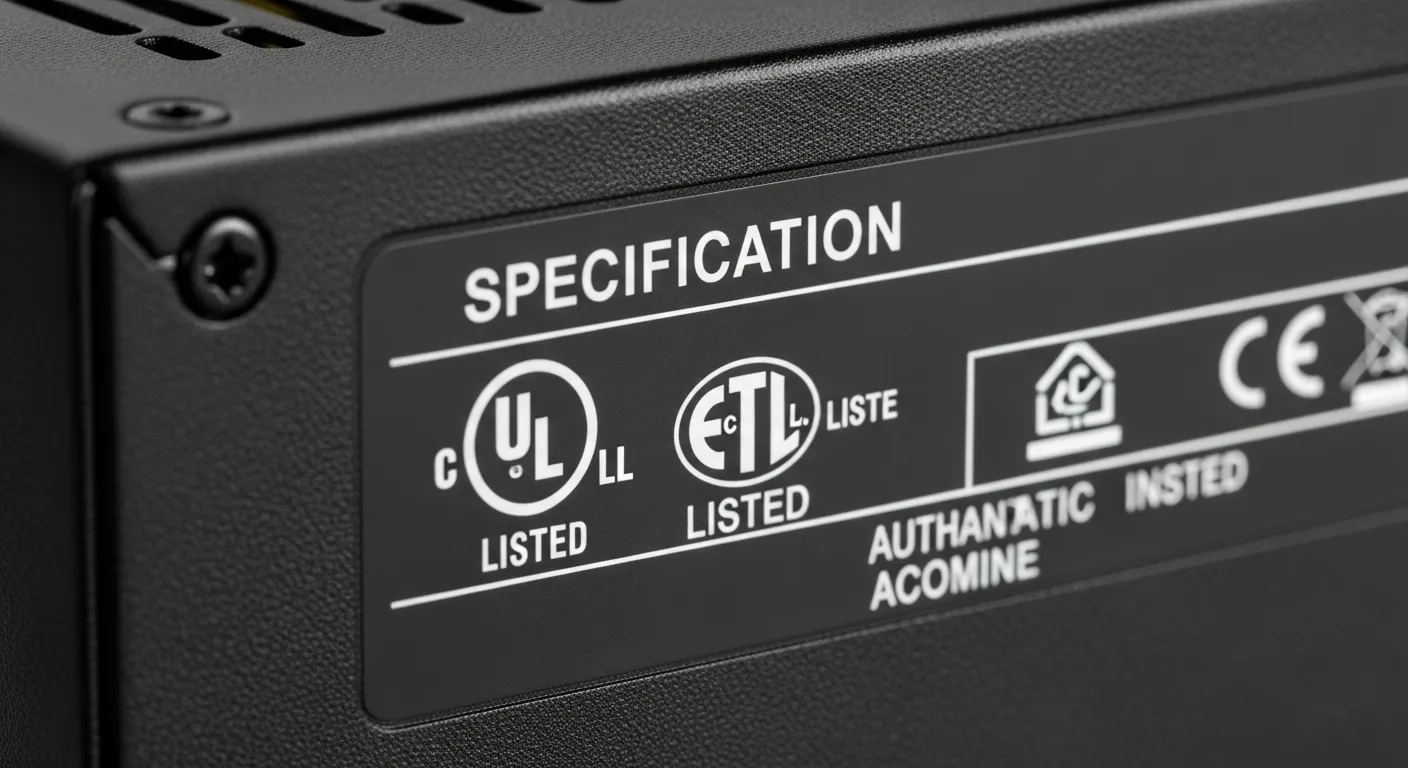
The most common certification marks are UL and ETL. These are not optional. They are proof that a product has undergone rigorous testing for fire risk, electrical shock hazards, and construction integrity. This certification is a mandatory requirement for:
- Passing municipal electrical inspections.
- Maintaining property insurance.
- Ensuring the fundamental safety of your home.
Many inexpensive systems sold online from international sellers lack these crucial certifications. They may carry a CE mark, but this is a European standard and not a valid substitute. Using a non-certified product can have severe consequences. For example, if a fire is traced back to a non-listed device, an insurance company has valid grounds to deny the claim, leaving the homeowner with catastrophic financial losses.
Professional's Warning: The Certification Rule
A licensed US electrician will refuse to install non-UL or ETL listed electrical products. This is not a preference; it is a matter of safety, code compliance, and professional liability. Always verify the certification mark on the product itself.
Is Track Lighting an Outdated Style?
One of the most significant cultural hurdles in the US is the perception that track lighting itself is an outdated concept. This view is often tied to the bulky, point-style fixtures that were common in the 1980s. It is important to distinguish these past trends from modern lighting systems.
The aesthetic goal of a modern magnetic track system is fundamentally different. Instead of a series of prominent fixtures attached to the ceiling, it aims to be an integrated part of the architecture. With recessed, trimless installations, all you see is a clean, minimalist line. The philosophy is about seeing the effect of the light, not the fixture itself.
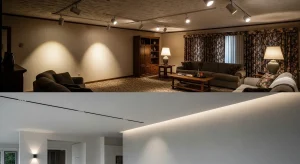
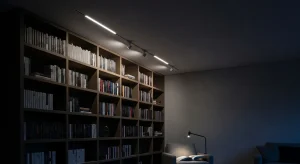
Furthermore, the modularity of these new systems directly solves the most common complaint about old track lighting: glare. A common mistake was to aim a row of spotlights down into a room, creating harsh, uncomfortable light. A well-designed magnetic system uses a variety of light modules on a single track. You can use Linear Light modules for soft, general ambient light, and wall-washer heads to graze vertical surfaces, making a space feel larger and more comfortable. Spotlights are then reserved only for specific accents, such as highlighting artwork. This layered approach creates a sophisticated, comfortable environment, a world away from the commercial feel of older systems.
A Buyer's Guide to Quality Systems
Navigating the market for magnetic track lighting can be challenging due to the wide gap in product quality. A low-cost system may look similar to a high-end one online, but its performance, longevity, and safety can be vastly different. A professional system is defined by the quality of its unseen components.
How to Identify a Low-Quality Product
Here is a breakdown of what to look for when evaluating a system. The differences in these components are the primary reason for the vast price discrepancies.
Component | Low-Quality Indicator | High-Quality Standard |
|---|---|---|
Track Rail | Thin, flexible aluminum | Thick, rigid aluminum (e.g., >2mm) |
Conductor | Thin, round aluminum wires | Flat, wide pure copper strips |
LED Chip | Unbranded, low CRI (<80) | CRI > 90, reputable brand (e.g., OSRAM) |
Power Supply | No warranty, not certified | UL/ETL listed, 3-5 year warranty |
- Why does track thickness matter? A thin aluminum track, especially in a recessed installation, can sag or warp over time under the weight of the fixtures. This slight deformation is enough to cause hairline cracks in the surrounding plaster, ruining a perfectly finished ceiling. A thick, rigid track provides the necessary structural integrity.
- Why is the conductor shape important? Imagine a tiny contact point trying to draw power from a round wire. Any slight movement of the light can cause a momentary loss of connection, resulting in flickering or even sparks. A wide, flat copper strip provides a large, stable surface area for the electrical contacts, ensuring a consistent and safe power delivery.
- Why do CRI and chip brand matter? A low Color Rendering Index (CRI) makes everything in your room look dull and inaccurate. Low-quality LED chips also suffer from rapid light decay, meaning they get noticeably dimmer in a short amount of time. A high-CRI chip from a reputable brand ensures that your Crate & Barrel sofa looks the color you paid for, and it will maintain its brightness for years.
- Why is the power supply so critical? The driver is the most common point of failure in any low-voltage lighting system. A cheap, uncertified driver can cause flickering, damage all the connected lights, or fail completely, taking the entire track offline. A high-quality, UL/ETL listed driver with a multi-year warranty is the foundation of a reliable system.
The Advantage of Standard Light Sources
A major concern with many magnetic track systems is the use of integrated, non-replaceable LEDs. If a single light module fails, the entire, often expensive, fixture must be discarded. This is a "black box" design that is impractical for long-term ownership.
A superior, professional-grade system addresses this by using track heads designed for standard, replaceable GU10 LED bulbs. This approach offers several key advantages that directly address consumer fears:
- Long-Term Serviceability: If a bulb reaches the end of its life, you can replace it easily and inexpensively. You are not forced into a costly replacement of the entire fixture.
- Freedom of Choice: You are not locked into the manufacturer's specific light output or color temperature. Imagine you want a warm, 2700K light for relaxing evenings, but a crisp, 4000K light for daytime work. With a GU10 system, this is a simple matter of swapping bulbs. With an integrated system, it's impossible.
- A Secure Investment: This design ensures your lighting system will not become obsolete due to the failure of a single, non-replaceable component. It provides peace of mind that your investment is serviceable for years to come.
The choice between an integrated light module and one that accepts a standard bulb like a GU10 is a critical decision. For a detailed technical comparison of common lighting standards, you can read our in-depth guide on GU10 vs. MR16 light sources here.
The Future of Magnetic Track Lighting in the US
The journey of magnetic track lighting in the United States has been defined by a clear set of challenges. The high initial cost, the complexity of installation, a market flooded with non-certified products, and a lack of standardization have all served as significant barriers to widespread adoption. The very features that make the technology innovative, its low-voltage architecture and modularity, have simultaneously created hurdles in a market accustomed to line-voltage simplicity.
However, the path forward is becoming clearer. The future success of this technology in the US will not be determined by the lowest price, but by a commitment to quality, education, and adherence to American standards. The demand is shifting away from cheap, disposable options and toward systems that promise genuine performance, safety, and longevity. As minimalist and flexible design trends continue to grow in US architecture, the core strengths of magnetic track lighting align perfectly with the evolving aesthetic.
The American market is not opposed to innovation. It is waiting for a reliable, code-compliant, and serviceable version of it. The opportunity belongs to suppliers who champion quality by providing fully UL/ETL certified systems, who educate the market on the principles of layered lighting, and who offer professional-grade products built with superior components and serviceable designs. For those ready to meet these standards, the moment to lead this technology from a niche curiosity into the American mainstream has arrived.
Frequently Asked Questions
What are the main disadvantages of magnetic track lights?
The primary disadvantages are a higher initial cost compared to traditional lighting, installation complexity due to the required external power supply, and a lack of standardization, which means components from different brands are not compatible. In the US, a key challenge is finding systems that are fully UL or ETL certified for safety and code compliance.
Is track lighting considered out of style?
While bulky, 1980s-style track spotlights are considered outdated by many, modern track lighting, especially minimalist magnetic systems, is a current trend in high-end architectural design. The focus has shifted from prominent fixtures to clean, integrated lines and sophisticated, layered lighting effects that solve old problems like glare.
What is the difference between magnetic track and normal track light?
The main difference is in the power supply and fixture attachment. Normal track lights typically run on 120V line-voltage and use a mechanical twist-and-lock mechanism to secure fixtures. Magnetic track lights use a low-voltage (24V/48V) system with an external driver and allow fixtures to be attached anywhere on the track via magnets, offering greater flexibility.
Do you need plywood support for magnetic track lights?
For recessed or trimless installations, yes, a support structure is necessary. The aluminum track itself needs to be mounted onto a solid backing, typically a frame made of plywood or aluminum, which is then installed between the ceiling joists. This ensures the track remains perfectly straight and secure within the finished ceiling.
How long do magnetic track lights last?
The lifespan of the system depends on its components. The track itself can last for decades. The critical components are the LED modules and the power supply. High-quality LED modules are rated for 30,000 to 50,000 hours of use. The power supply is the most common point of failure, which is why choosing a system with a high-quality, warrantied driver is essential for long-term reliability.


